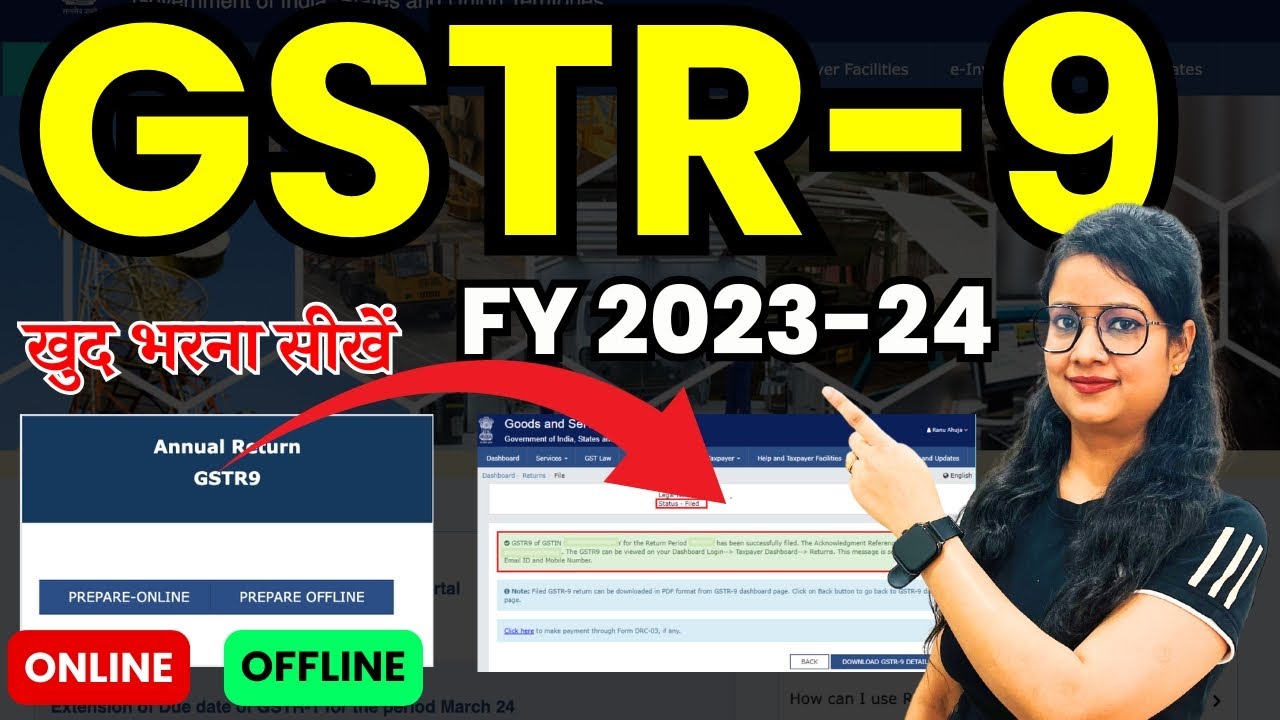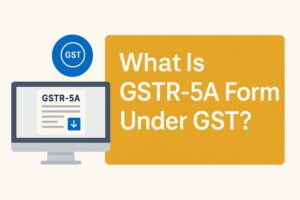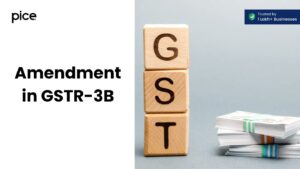GSTR 9A Annual Return:Meaning, Eligibility, Format & More
- 20 Feb 25
- 10 mins

GSTR 9A Annual Return:Meaning, Eligibility, Format & More
Key Takeaways
- GSTR-9A was an annual return for composition taxpayers, now replaced by GSTR-4.
- Businesses with turnover up to ₹1.5 crore (₹75 lakh for NE & HP) were eligible.
- Late filing incurred ₹200/day penalty, capped at 0.25% of turnover.
- Filing NIL returns was mandatory, even with no transactions.
- Avoid errors like incorrect ITC claims and missed deadlines to prevent penalties.
The Goods and Services Tax is a comprehensive indirect tax structure that has reduced the cascading effect of taxation and streamlined operations. By filing returns, be it monthly, quarterly or yearly, registered taxpayers can stay legally compliant, maintaining a clear record of all business transactions.
Under the GST regime, the composition scheme is a simple and easy way for small business owners to keep their business on the right side of the law. It allows taxpayers to stay safe from the complexities of GST and pay taxes at a fixed turnover rate.
GSTR 9A is an annual return filing for taxpayers under the composition scheme. GSTR 9A annual return encompasses all the relevant information that was filed in the quarterly returns of the current fiscal year. Subsequently, this blog talks about the nitty-gritty of GSTR 9A forms to help you understand better.
What Is the GSTR 9A?
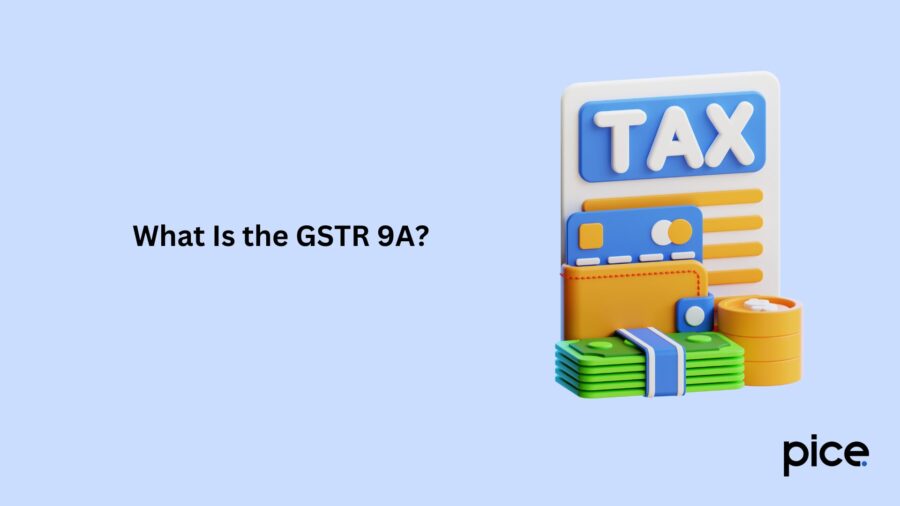
GSTR-9A is a summary of all the outward supply, inward supply, taxes paid, claimed refunds, demand created, availed or reversed input tax credit during a financial year. It comprises information in relation to various tax heads such as CGST, SGST and IGST.
Starting from FY 2019-20, the department has abolished GSTR-9A and replaced it with the updated GSTR-4. As a result, composition taxpayers must now file GSTR-4 as their annual return.
Filing the GSTR 9A annual return form was mandatory to maintain accountability and transparency with the law and order. Timely filing allows taxpayers to avoid penalties and get a complete overview of all the business transactions they have made throughout the year.
Who Is Required to File GSTR-9A?
All GST-registered taxpayers who have enrolled under the composition scheme should file a GSTR 9A form yearly. This means taxpayers:
- Those who have opted for the composition scheme since their GST registrations and never opted out
- Who have enlisted themselves under the composition scheme during any time of the economic year
- Who were part of the composition scheme initially but later opted out of the scheme
Who Is Not Required to File GSTR-9A?
Certain taxpayers are not required to file GSTR 9A. Here’s a detail:
- Regular taxpayers who have never enrolled under the composition scheme
- Input Service Distributor (ISD)
- Non-resident taxable person
- Casual taxable person
- Persons needed to Deduct Tax at Source under Section 51
- Persons needed to Collect Tax at Source under Section 52
What Is the GSTR-9A Due Date?
The due date for filing GSTR 9A is 31st December of the upcoming financial year. For example, you are filing GSTR 9A for 2023-24, and the last date of filing will be 31st December 2024.
What Is the GSTR-9A Turnover Limit?
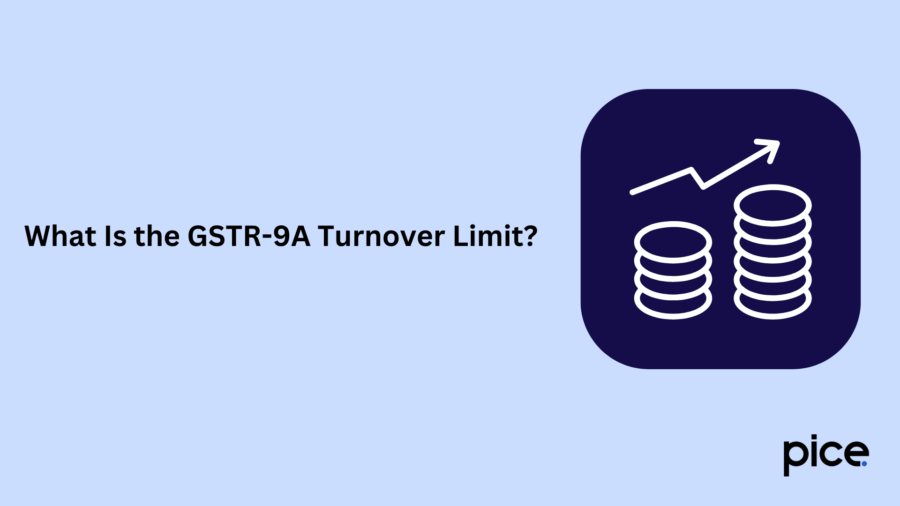
The turnover limit of businesses plays a key role in determining a taxpayer’s eligibility for filing GSTR 9A. The composition scheme is exclusively designed for small taxpayers allowing them to pay tax at a reduced rate.
Businesses with annual aggregate turnover within ₹1.5 crore can be a part of the composition scheme and file GSTR 9A annual return. For North-Eastern states and Himachal Pradesh, the limit stands at ₹75 lakh. The turnover limit is applicable nationwide to businesses registered under a single PAN.
If a business generates a turnover of more than ₹1.5 crore, then it must switch to a regular GST scheme and file returns accordingly. Staying within the GSTR-9A turnover limit is essential to avail the benefits composition scheme. Thus, it is advised to regularly monitor the turnover to avoid further legal complications.
What Are the Pre-Conditions for Filing GSTR 9A?
Taxpayers must meet the following conditions for filing GSTR-9A. Take a look:
- Taxpayers should be registered in the GST regime and opt for a composition scheme at least for a day of the financial year.
- Composition dealers have filed all the relevant quarterly returns, such as GSTR 4, to file GSTR 9A as an annual return.
What Is the GSTR 9A Format?
The GSTR 9A form consists of 5 parts containing various relevant information. Here is a tabulated illustration for better understanding:
| Parts of GSTR 9A | Information to be given |
| Part I: Basic Details | This part requires your basic details, like GSTIN, legal name, annual turnover of the previous financial year and the total period of composition scheme in the current year. This section also included auto-populated trade names. |
| Part II: Summary of Sales and Purchases | This section comprises the aggregate values and net tax payable of taxable sales, inward supplies liable to reverse charges received from either registered persons or unregistered persons and import of services and goods. |
| Part III: Details of Tax Paid by Business | Paid tax rates as declared in returns under various heads such as SGST, IGST, CGST, interest, cess, late fee and penalty should be mentioned here. |
| Part IV: Amendments | This part deals with details of transactions of the previous financial year mentioned in returns of April to September or up to the date of filing the return, whichever comes earlier. It also includes all additions or omissions of the previous year’s entries. |
| Part V: Other Details | This portion contains a comprehensive outline of sales and refunds along with paid or payable tax amounts, the adjustment of ITC in case of switching schemes, applicable penalties etc. |
How to File GSTR 9A?
Composition taxpayers adhered to the following step-by-step guide to file GSTR-9A:
- Step 1: Visit the official portal of Goods and Services Tax and log in using your credentials.
- Step 2: Navigate to ‘Services’, then ‘Returns’ and click on the ‘Annual Returns’ option.
- Step 3: Select the year for which you are filing the return and proceed by clicking ‘Prepare Online’.
- Step 4: Then, you have to answer the given questionnaire. Also, if you wish to file an NIL return, you should mention the same here. You have to answer ‘Yes’ to all the given criteria to file a NIL GSTR 9A. However, if you answer ‘No’, the ‘GSTR-9A Annual Return for Composition Taxpayers’ page with all the above-mentioned sections will be displayed.
- Step 5: Download the system-computed GSTR 9A summary and GSTR 4 summary to reconcile the regular returns and enter relevant details in corresponding tiles. If the value entered is 20% more or less than the system-computed one, then the particular box will be highlighted and a confirmation box will pop up. Ensure to make ‘yes’ to the box to proceed.
- Step 6: Post-entering all details, you can preview the draft in PDF or Excel format.
- Step 7: Next, click on ‘Compute Liabilities’ to estimate the additional tax liabilities. You can also calculate the late fees here, if applicable and pay it using funds from the electronic cash ledger. In case of insufficient funds, taxpayers can create a challan and pay via either NEFT/RTGS, NetBanking or RTGS facilities.
- Step 8: Preview the file again to ensure optimum accuracy.
- Step 9: Tick mark the declaration box and choose ‘Authorised Signatory’. By clicking on ‘File GSTR 9A’ you will be given 2 options, File with EVC or File with DSC, continue accordingly to submit the return.
What Was the Penalty for Late Filing of GSTR-9A?
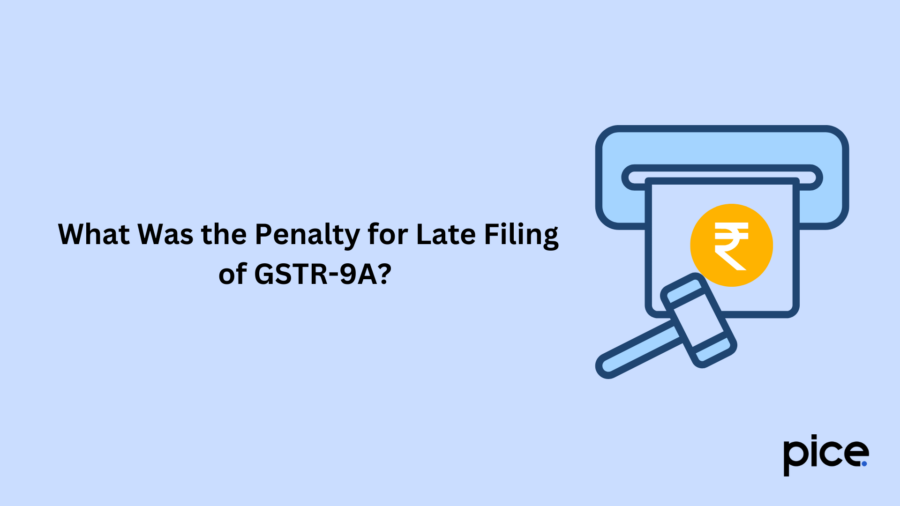
In case of missed or late filing of GSTR 9A, a penalty of ₹200 (₹100 for SGST or UTGST and ₹100 for CGST) is levied on the taxpayer for each day of delay until the return is finally filed.
Note that the maximum penalty imposed on a composition taxpayer must be within 0.25% of the annual turnover in a State or Union Territory.
Mistakes to Avoid While Filing GSTR 9A
As of today, there is no offline tool to file GSTR 9A.
However, the digital process of filing GST returns is prone to mistakes in other cases as well. Here are all the common mistakes that occur in GSTR filing and tips to avoid them:
- Claiming incorrect input tax credit
To avoid this, taxpayers must retain all their purchase documents and reconcile those while claiming input tax credit.
- Late filing returns
Composition dealers often miss the due date of filing their returns. To avoid this, you can set reminders and keep your business transaction documents, including invoices and receipts close to your reach.
- Not filing NIL returns
Many composition scheme taxpayers think since they have not made any transaction, there is no need to file a return. Most businesses face penalties for neglecting NIL transactions. Please note that even if no transactions were made, taxpayers must file a return within the due date.
Conclusion
Summing up, filing a GSTR 9A annual return was a compliance requirement for composition scheme taxpayers. Replaced by GSTR-4, it offers a consolidated overview of all your business transactions in a particular financial year. Meeting the eligibility criteria and complying with the turnover limit is essential to avail the benefits of the composition scheme.
Late filing can incur penalties leading to financial burdens on taxpayers. Thus, ensure to timely file by following the above-mentioned process to stay on good terms with the authorities.
💡If you want to streamline your payment and make GST payments via credit card, consider using the PICE App. Explore the PICE App today and take your business to new heights.







